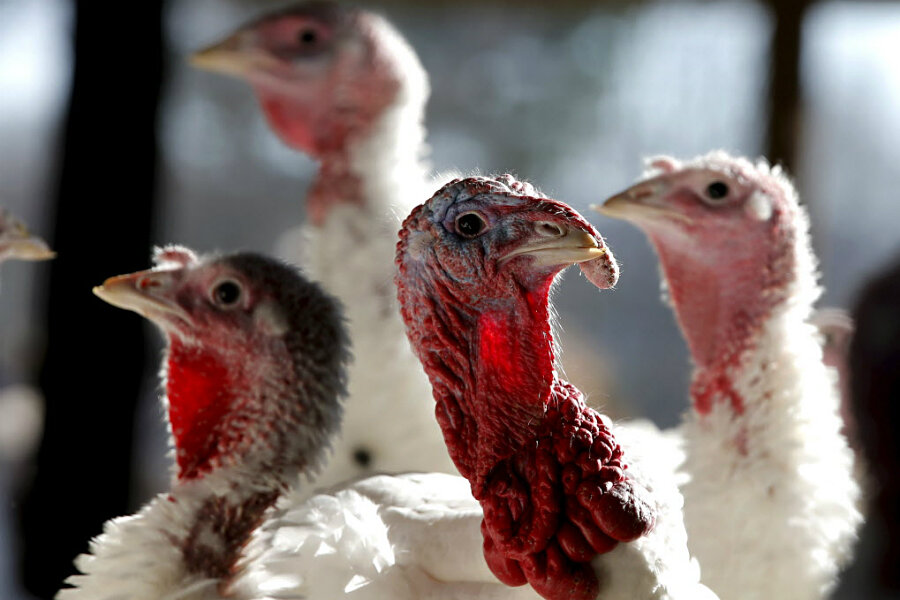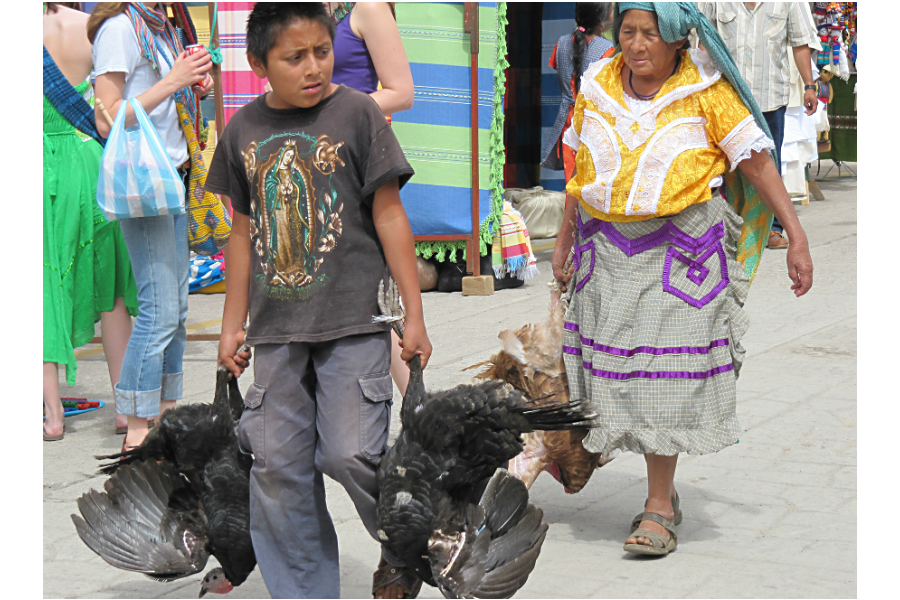Were native Americans raising turkeys long before the first Thanksgiving?
Nearly 400 years ago, Pilgrims and native Americans sat down to share a feast that became known as the first Thanksgiving. As the story goes, the meal was a celebration of the colonists' first successful harvest. The table was supposedly filled with food that the Wampanoag people had helped the colonists grow and hunt, ranging from venison and fish to cornbread and squash.
Today, the traditional meal is centered around a large, roasted turkey, probably purchased from a grocery store. Centuries ago, there weren't grocery stores filled with already plucked turkey carcasses ready to go in the oven, but that doesn't mean that domesticated turkeys didn't make it on the menu.
Archaeologists have unearthed evidence that native Americans were raising turkeys for centuries before the European colonists even arrived in the Americas.
"Our research tells us that turkeys had been domesticated by 400-500 AD," explained Gary Feinman, an archaeologist at The Field Museum in Chicago, in a press release.
Dr. Feinman and colleagues found unhatched turkey eggs alongside the bones of both juvenile and adult birds at a 1,500-year-old archaeological site in Oaxaca, Mexico. "The fact that we see a full clutch of unhatched turkey eggs, along with other juvenile and adult turkey bones nearby, tells us that these birds were domesticated," Feinman said.
These turkeys may not have been raised expressly for sustenance, Feinman added. The Zapotec people who still live in Oaxaca use turkey eggs as a ritual offering and eat and use turkey as a part of many rituals today. Those same traditions likely go back to the time when the turkeys found by the archaeologists lived and died.
Mexico was thousands of miles away from Plymouth where the first Thanksgiving took place, so if any turkeys were eaten at that meal they still might have been wild, right?
William Bradford, the governor of Plymouth, wrote in a 1621 letter that the colonists had hunted a "great store of wild turkeys," according to National Geographic, so that certainly suggests that the way of obtaining any turkey meat was by hunting the wild birds.
But another team of archaeologists working in Tennessee, hundreds of miles closer to Plymouth than Mexico, have also found turkey bones bearing clues that the animals might have been domesticated.
More than 400 bones were found at the archaeological site just outside Nashville, dating to around 1250 to 1450. Some of these bones had been made into beads and it was clear that the animals were being used for ornamentation or rituals, in addition to food.
That still doesn't prove the turkeys were domesticated. But there were many more males than females, the males were particularly large as animals often get when domesticated, and "it appears that the female specimens were not taken during the egg-laying period," the archaeologists write in their paper published Monday in the Journal of Archaeological Science: Reports. That could either be consistent with domestication or selective hunting of the larger male turkeys.
Feinman and his colleagues' research was also published in the Journal of Archaeological Science: Reports, in July.
Today, about a quarter billion turkeys are raised in the United States each year. On Thanksgiving, Americans eat about 46 million of those birds.
It seems possible that the Wampanoag people may have domesticated turkeys before they met and trained the European colonists to live off their homeland. But, if they were farming turkeys, did the native Americans share all their farming secrets with the newcomers? That's unclear. But as turkey is now a staple on the Thanksgiving table, the immigrants definitely figured it out eventually.







